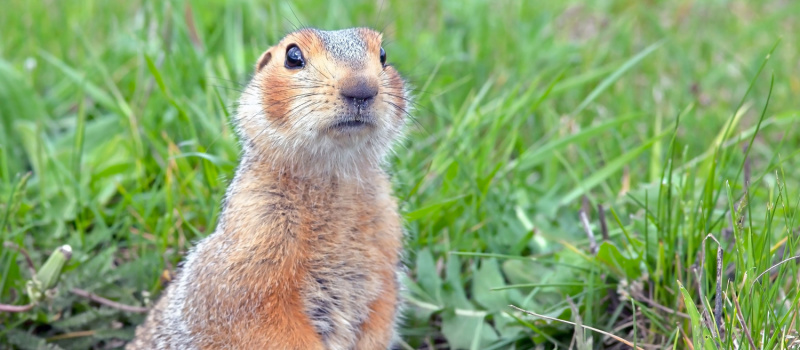Is a Gopher Causing Damage to Your Yard?

Maintaining a beautiful and well-manicured yard is a goal for many homeowners. However, sometimes unexpected visitors can wreak havoc on your landscaping efforts. One such unwelcome guest is the gopher. These small, burrowing rodents can cause significant damage to your yard if left unchecked. This article will explore the signs of gopher activity and discuss practical measures to prevent and control the damage they cause.
Signs of Gopher Activity
1. Mounds of Earth
Gophers are known for their extensive tunneling systems. As they burrow underground, they push the soil to the surface, creating mounds or raised areas in your yard. These mounds are typically crescent-shaped and can vary in size depending on the gopher's activity level.
2. Tunnels and Holes
Gophers construct intricate tunnel networks to access food sources and establish their homes. These tunnels are usually hidden beneath the surface, but you may notice small openings or holes leading to their underground passages. Gopher holes are typically circular and can be distinguished from other burrowing animals' holes by shape and size.
3. Damaged Plants
Gophers are herbivores and feed on various plant roots and tubers. They can cause significant damage to your yard by gnawing on the roots of your plants, which can lead to stunted growth, yellowing foliage, and, eventually, plant death. If you notice wilting or dying vegetation without an apparent cause, gophers might be to blame.
Prevention and Control
The first step in addressing a gopher problem is identifying their presence and locating their active burrows. Look for freshly dug mounds of soil or openings leading to tunnels. By identifying the main activity areas, you can focus your efforts on those specific locations.
- Fencing
Installing underground mesh or hardware cloth barriers around vulnerable areas can be an effective preventive measure. Bury the fence at least a foot deep to prevent gophers from burrowing underneath. Remember to extend the fencing above ground level to deter them from climbing over.
- Trapping
Gopher traps can be an efficient way to control gopher populations. Place traps near active tunnels and follow the manufacturer's instructions for optimal results. Trapping can be humane if done correctly, but it requires patience and consistent monitoring.
- Natural Predators
Encouraging natural predators like owls, snakes, or domestic pets that hunt gophers can help keep their population in check. Providing habitat features such as perches, nesting boxes, or rock piles can attract these predators to your yard.
- Plant Selection
Gophers have preferences when it comes to their diet. By choosing plants that are less appealing to them, you can reduce the likelihood of gopher damage. Opt for plants with strong scents, such as lavender or rosemary, which gophers tend to avoid.
- Irrigation Management
Gophers are attracted to areas with abundant moisture and soft soil. Proper irrigation management can discourage gophers from taking up residence in your yard. Avoid overwatering and consider using drip irrigation or soaker hoses instead of sprinklers.
- Professional Assistance
If the gopher problem persists or becomes overwhelming, it may be necessary to seek professional assistance. Pest control companies have the knowledge and tools to address gopher infestations effectively.
Remember, consistency and persistence are key when dealing with gophers. Implementing a combination of these steps will increase your chances of effectively stopping gophers from destroying your lawn. Keep in mind that gopher control may require ongoing efforts, especially in areas with high gopher populations. If your gopher problem persists or becomes overwhelming, consider seeking professional assistance from The Experienced Gardener; we can provide expert guidance and expertise. By taking proactive measures and addressing gopher issues promptly, you can protect your lawn and ensure a beautiful and well-maintained outdoor space for years to come.


